CAPE ELIZABETH — Peter Sottery and his siblings were all grown up and out of the house, but every year on Christmas Day they gathered at his mother’s.
The problem was, they never arrived at the same time.
“I’m an early riser, so I’d be over there at 8:30 and I’d be twiddling my thumbs until 11 or 11:30 when my little brothers and sister wandered in, and I was getting frustrated with that,” Sottery said. “So I decided that maybe Christmas morning was a good time to make the baklava, because that would keep me occupied and it was a good time to spend with my mother. So I did that for many, many years on Christmas morning.”
The Christmas baklava, a tradition in Sottery’s Greek family, has always been made in his grandmother’s 15-inch round pan, which Sottery inherited after his mother’s death five years ago. The recipe is printed on page 152 of “Cooking in Modern Greece,” which appears to be part of a larger Greek cookbook published in 1970. But parts of the recipe have been crossed out over the years, and ingredient amounts have been changed so much by Sottery’s mother, and then by Sottery himself, that the baklava he made for us in his home kitchen could probably be considered an original recipe.
Its appeal has grown beyond holidays with the family. Sottery and his wife, Lucille Holt-Sottery, often carry his Yia Yia’s big pan to parties because their friends want their baklava served right out of it. If they don’t arrive at the festivities with the baklava in hand, Holt-Sottery said, only half-jokingly, “we might as well not go.”
Sottery estimates that he makes the baklava two or three times a year, including around Easter. “I need to give most of it away,” he said, “because if it’s here, I’ll eat it. I start out with a piece with my coffee for breakfast, if it’s around.”
Sottery was a bit reluctant to give away some of his secrets at first, but ultimately agreed to a full demonstration. The result illustrated why this delicate dessert is so coveted by Sottery’s friends: It’s made with 28 layers of phyllo and a pound of butter cleverly – and evenly – applied with the same kind of squirt bottle you’d use to water plants.
“I think you’ll be surprised how basic the ingredients are for this,” he said as we started our batch of baklava, “but the finished product is so complex.”
Sottery works on a kitchen island and suggests spreading it with newspaper first. Working with melted butter can get messy. While the butter melts on the stovetop, he mixes the filling of chopped walnuts, sugar and cinnamon. He uses Saigon cinnamon because he thinks it’s more pungent and packs a bigger punch, and he triples the amount called for in the original recipe.
Sottery, who comes from a long line of chemists, tests sunscreens for a living and acts like a scientist when he’s working with a recipe. He constantly tweaks the flavor and texture.
“I think I got that mad scientist ‘add a little bit of this, add a little bit of that’ from my father, because he was always dabbling in the kitchen,” Sottery said.
Sottery didn’t always care about cooking and baking. In his 20s, he was a typical young adult, trying to get as far away from his parents as possible.
“Then I got to be 30 years old, and I said ‘You know? Mom’s not going to be around forever. I’d better start paying attention to all the stuff she cooks that I really like so I’ll be able to replicate it,'” he said. “So I started paying attention and cooking with her.”
His mother, whose name was Mary, often made dolmades (stuffed grape leaves), spanakopita, pork chops and rice, and Greek salads. Sottery likes making her leg of lamb.
He still makes baklava as a Christmas tradition, but now he goes to his sister’s house the week before the holiday. They make two pans of it, one for each of their families, then share dinner together.
After preparing the filling, Sottery starts layering the phyllo in the pan, which makes 60 to 70 pieces. Sottery uses No. 4 phyllo that he buys at Micucci’s, the Italian grocery on India Street in Portland.
“Phyllo can be difficult,” he said. “If you take it out too early, it dries out and it’s too brittle. Sometimes it’s too moist and it sticks together, and then it’s really a pain to work with.”
After laying a sheet into the pan, he picks up the spray bottle filled with the melted butter and spritzes the phyllo 10 to 12 times. It’s more efficient than brushing each layer with butter, he’s found, and it appears to coat the phyllo more evenly. “It just saves so much time,” he said.
Sottery completes about 10 layers of phyllo, layering them at different angles, then adds half the filling to the pan. Next comes another third of the phyllo, and the second half of the filling. He finishes it off with the final layers of phyllo on top. He sprays the top with butter, but not too much because he doesn’t want it to get mushy. “It’s much easier to cut the top layer when it’s dry,” Sottery said.
Next he goes around the pan giving the layers of phyllo a bit of a tuck so it looks nice and neat. Any excess dough gets trimmed.
Sottery scores the pastry with a serrated knife, making cuts about an inch apart, then turns the pan about 45 degrees and cuts again to make diamond shapes. He finishes by spraying the top again with butter, now advising “go ahead and be generous.”
(Note: Even with all of this spraying, Sottery only used about 80 percent of the pound of butter called for in the recipe.)
While the baklava is baking, Sottery makes the sauce on the stovetop, combining sugar, cinnamon, water, honey and fresh lemon. He brings the sauce to a simmer, being careful to watch so it doesn’t froth up and boil over. “You just want it to be a slow simmer for roughly 30 to 40 minutes, and you want to put the hot sauce on the hot baklava,” he explained. “So as soon as the baklava comes out of the oven, you put the sauce on. It almost steams.”
The baklava comes out of the oven glistening and smelling fantastic, and Sottery pours the hot sauce over the pastry. It bubbles noisily.
Here comes the best part – the tasting. Sottery made an extra pan of baklava the day before that has been chilled. He insists we try the hot-out-of-the-oven version and compare it to the cold version. (Twist my arm.) Sottery is convinced the baklava has more flavor – and a more satisfying, chewy texture – when it’s cold. I agree with him, although not all of his guinea pigs share the same opinion.
One thing we all agree upon: Hot or cold, it’s probably the best baklava we’ve ever tried.
“I’d pit mine against anybody else’s,” Sottery said.
SOTTERY FAMILY BAKLAVA
Makes 60-70 pieces in a 15-inch round pan
FOR THE PASTRY:
1 pound No. 4 phyllo
1 pound salted butter
16 ounces walnuts, chopped in food processor to 1/8-inch bits
1 cup sugar
3 tablespoons Saigon cinnamon
FOR THE SAUCE:
¾ cup sugar
2 cups honey
1 cup water
Juice and rind of one lemon
2 cinnamon sticks
Preheat oven to 350 degrees.
Defrost frozen phyllo overnight in the refrigerator. (Don’t leave on counter to thaw or it will dry out and become brittle.) While butter is melting on stovetop, mix ingredients for the filling in a bowl and set aside.
Pour melted butter into a spray bottle. Start layering phyllo in pan, spraying each layer with light squirts of butter. After you’ve layered a third of the phyllo (about 10 sheets) spread half of the filling on top of the dough. Layer another third of the phyllo, then spread the rest of the filling on top. Finish by layering the rest of the phyllo. Spray the top with a little butter, but not too much, so it will be easier to cut. Using a serrated knife, score the baklava by cutting about two-thirds of the way down into the pan. Don’t cut all the way to the bottom or the pastry will not absorb the sauce as well. Continue cutting into rows about an inch wide, then turn the pan about 45 degrees and score more rows, making the traditional diamond shapes. Tuck in the phyllo around the edges, trimming any excess.
Spray the top generously with butter, and put into the oven for an hour. Check after 20 minutes. If it’s getting too brown, lower the temperature to 300 or 325 degrees.
While the baklava is baking, make the sauce. Combine sugar, honey, water, lemon juice and rind, and cinnamon sticks in a sauce pan over low to medium heat until it starts to boil. The sauce will froth a little when it starts to boil. Turn the heat down to prevent it from boiling over. Keep it bubbling on a slow simmer for about 30 minutes.
When baklava comes out of the oven, strain the sauce and immediately pour it over the pastry. Let it set for at least 2 hours before serving (overnight is best).
Send questions/comments to the editors.


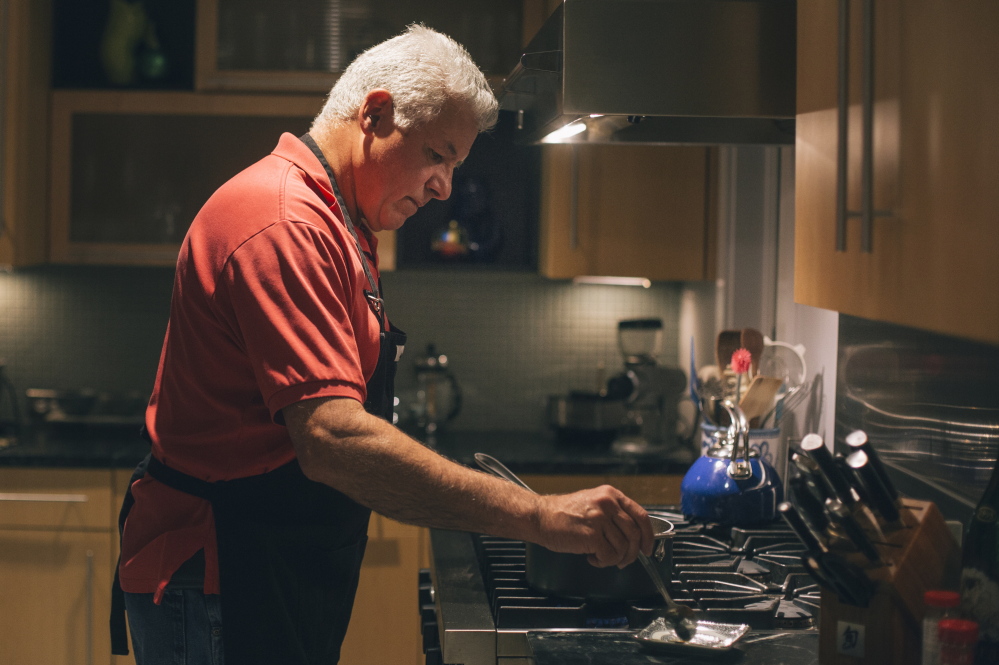
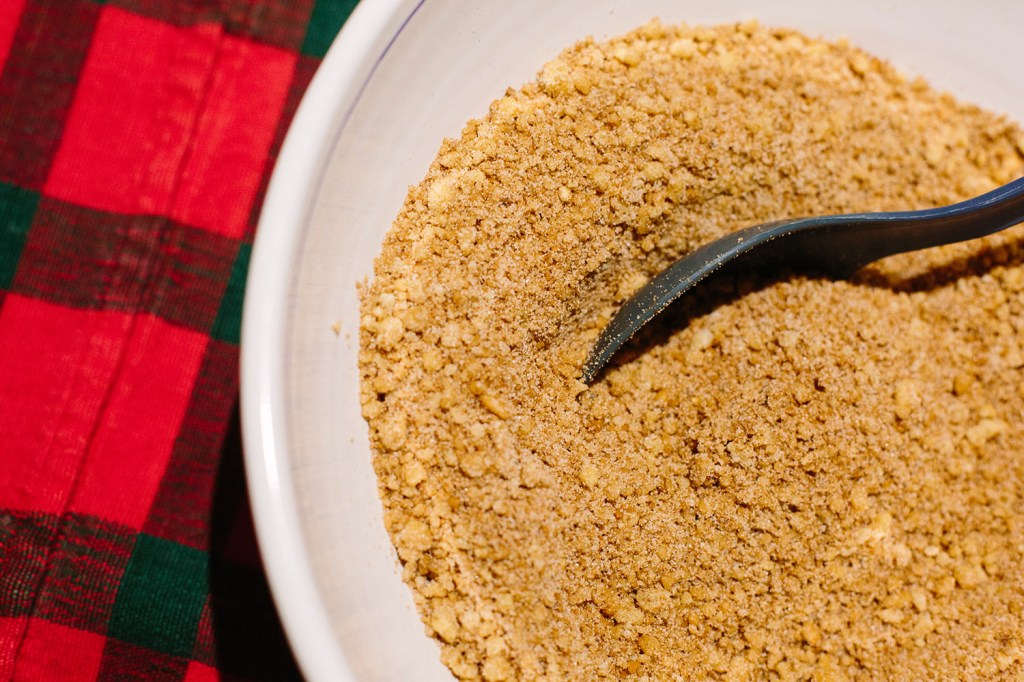
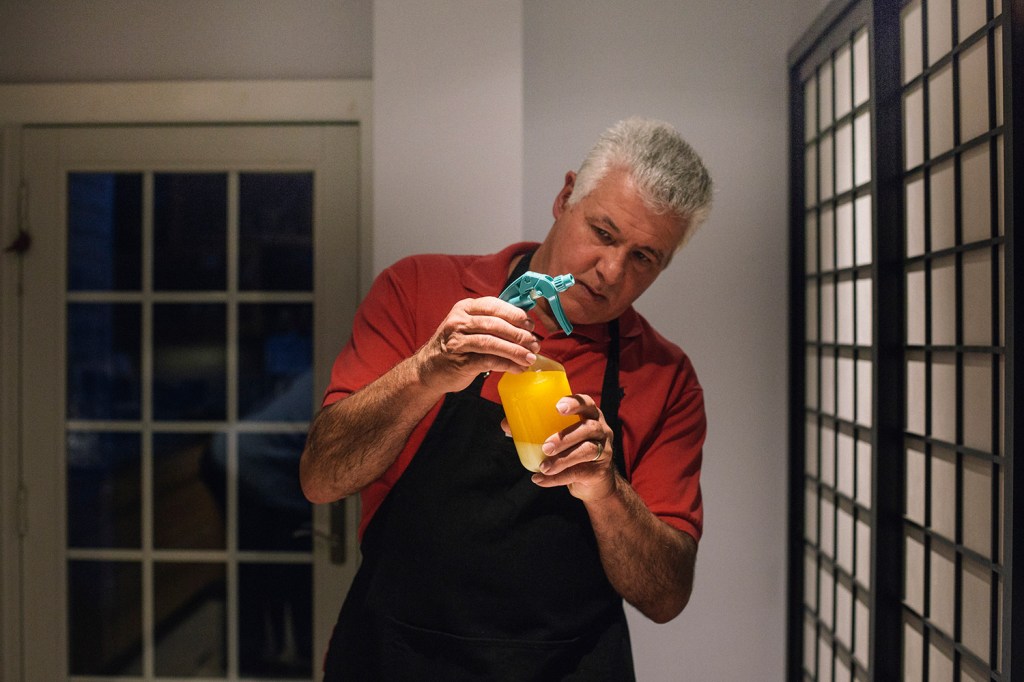

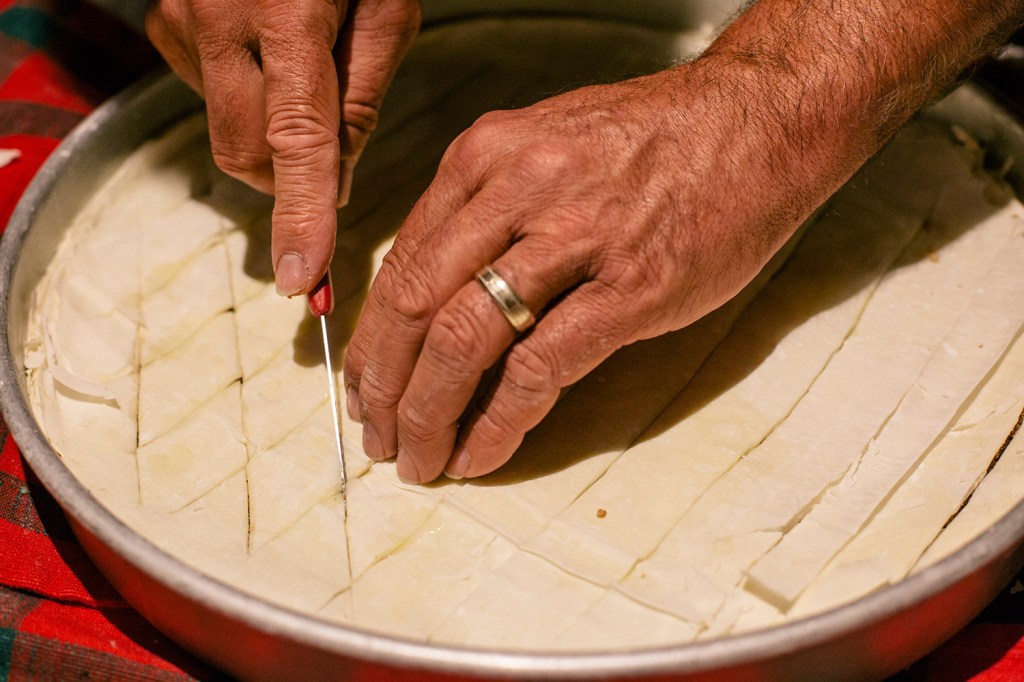
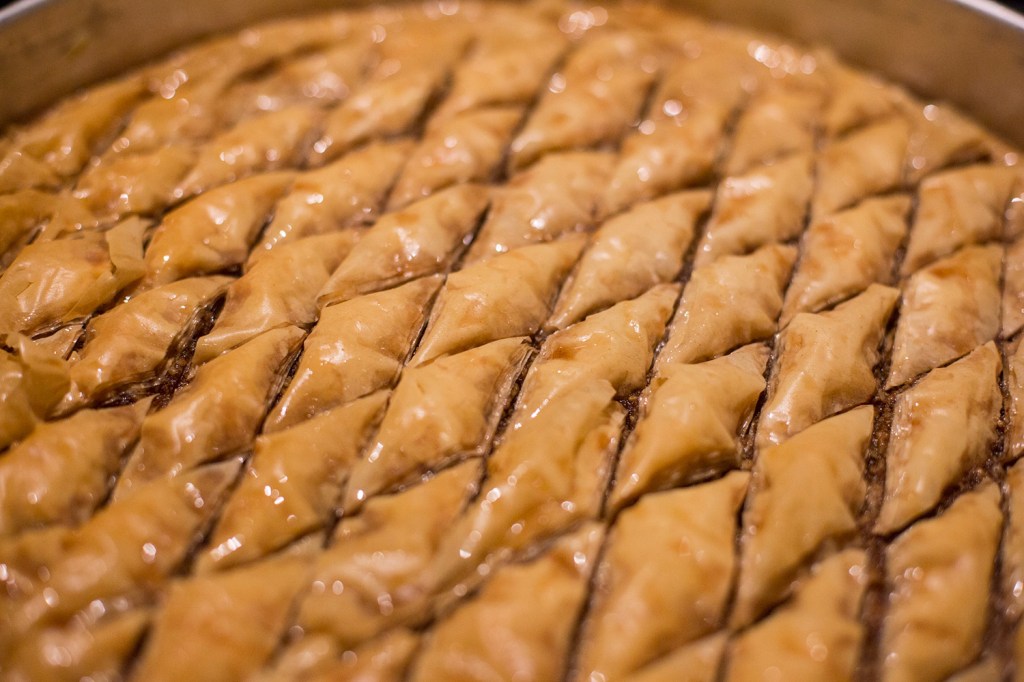



Comments are no longer available on this story